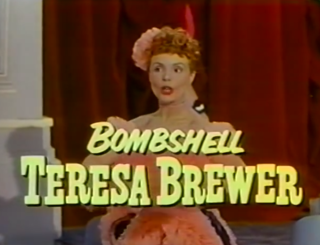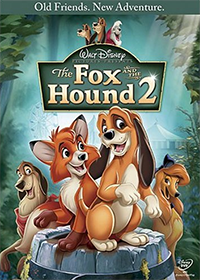
John Lee Hooker was an American blues singer, songwriter, and guitarist. The son of a sharecropper, he rose to prominence performing an electric guitar-style adaptation of Delta blues. Hooker often incorporated other elements, including talking blues and early North Mississippi Hill country blues. He developed his own driving-rhythm boogie style, distinct from the 1930s–1940s piano-derived boogie-woogie. Hooker was ranked 35 in Rolling Stone's 2015 list of 100 greatest guitarists.

Joseph Vernon "Big Joe" Turner Jr. was an American blues shouter from Kansas City, Missouri. According to songwriter Doc Pomus, "Rock and roll would have never happened without him." His greatest fame was due to his rock-and-roll recordings in the 1950s, particularly "Shake, Rattle and Roll", but his career as a performer endured from the 1920s into the 1980s.
Vocalese is a style or musical genre of jazz singing in which words are added to an instrumental soloist's improvisation.

James Witherspoon was an American jump blues singer.

Teresa Brewer was an American singer whose style incorporated pop, country, jazz, R&B, musicals, and novelty songs. She was one of the most prolific and popular female singers of the 1950s, recording nearly 600 songs.

"Singin' in the Rain" is a song with lyrics by Arthur Freed and music by Nacio Herb Brown. Introduced by Doris Eaton Travis in The Hollywood Music Box Revue, then months later by Cliff Edwards and the Brox Sisters in The Hollywood Revue of 1929, the song was subsequently recorded by many contemporary artists.

Singin' in the Rain is a 1952 American musical romantic comedy film directed and choreographed by Gene Kelly and Stanley Donen, starring Kelly, Donald O'Connor, and Debbie Reynolds and featuring Jean Hagen, Millard Mitchell and Cyd Charisse. It offers a lighthearted depiction of Hollywood in the late 1920s, with the three stars portraying performers caught up in the transition from silent films to "talkies".
"Singing the Blues" is a popular song written by Melvin Endsley and published in 1956. The song was first recorded and released by Marty Robbins in 1956. It is not related to the 1920 jazz song "Singin' the Blues" recorded by Frank Trumbauer and Bix Beiderbecke in 1927.

The Fox and the Hound 2 is a 2006 American animated direct-to-video film produced by DisneyToon Studios, and a followup to the 1981 Disney animated film The Fox and the Hound. The film was directed by Jim Kammerud and released on December 12, 2006. The story of the film takes place during the youth of Tod and Copper, in which Copper is tempted to join a band of singing stray dogs. The film features the voices of Reba McEntire and Patrick Swayze. The film had an official soundtrack album released on November 21, 2006.
"Singing in the Bathtub" is a song written in 1929 by Michael H. Cleary, with lyrics by Herb Magidson and Ned Washington for the film The Show of Shows. The Show of Shows was Warner Bros.' answer to MGM's The Hollywood Revue of 1929, and "Singing in the Bathtub" spoofs Hollywood Revue's song "Singin' in the Rain". In Show of Shows, the number features an enormous bathtub and is performed by Winnie Lightner and a chorus of male performers wearing antiquated bathing suits.

Singin' the Blues is a compilation album by American bluesman B.B. King released in 1957. All of the songs had been issued between 1951 and 1956 on singles by RPM Records and most had reached the Top 10 on Billboard's Race/R&B singles charts. The Bihari brothers released it as King's first album on their Crown Records budget label.

"3 O'Clock Blues" or "Three O'Clock Blues" is a slow twelve-bar blues recorded by Lowell Fulson in 1946. When it was released in 1948, it became Fulson's first hit. When B.B. King recorded the song in 1951, it became his first hit as well as one of the best-selling R&B singles in 1952.

"You Know I Love You" is a song written and recorded by B.B. King. Released on RPM Records in 1952, it was King's second No. 1 single on the Billboard R&B chart. King's friend and collaborator Ike Turner played piano on the original recording. A version of "You Know I Love You" was included on King's debut album Singin' The Blues in 1956.
The Final Reunion Tour was Cliff Richard and The Shadows' last worldwide tour together. The 2009–10 arena tour included shows in UK, Ireland, Europe, Australia, New Zealand and South Africa. The tour marked 50 years since they first played together and was the first time they had played together in over 20 years. The tour grossed more than $60m.

"I'm Glad There Is You " is a song written by Jimmy Dorsey and Paul Madeira first published in 1941. It has become a jazz and pop standard.
"How Blue Can You Get" is a blues song first recorded by Johnny Moore's Three Blazers in 1949. It is a slow twelve-bar blues that jazz critic Leonard Feather and his wife, Jane Feather, are credited with writing. The song has been recorded by several blues and other artists. In 1964, it was a hit for B.B. King and became a staple of his live shows.

The song known as both "Gospel Boogie" and "A Wonderful Time Up There" was written by Lee Roy Abernathy, and first recorded by him in 1947 under the former name. This release, for the label White Church Record, credits the performance with variant spelling to "Leroy Abernathy Homeland Harmony Quartet".
"Oh, Freedom" is a post-Civil War African-American freedom song. It is often associated with the Civil Rights Movement, with Odetta, who recorded it as part of the "Spiritual Trilogy", on her Odetta Sings Ballads and Blues album, and with Joan Baez, who performed the song at the 1963 March on Washington. Baez has since performed the song live numerous times, both during her concerts and at other events. The song was first recorded in 1931 by the E. R. Nance Family as "Sweet Freedom".

"Singin' the Blues" is a 1920 jazz composition by J. Russel Robinson, Con Conrad, Sam M. Lewis, and Joe Young. It was recorded by the Original Dixieland Jass Band in 1920 as an instrumental and released as a Victor 78 as part of a medley with "Margie". The song was released with lyrics by vocalist Aileen Stanley in 1920 on Victor. In 1927, Frank Trumbauer, Bix Beiderbecke, and Eddie Lang recorded and released the song as an Okeh 78. The Trumbauer recording is considered a jazz and pop standard, greatly contributing to Frank Trumbauer and Bix Beiderbecke's reputation and influence. It is not related to the 1956 pop song "Singing the Blues" first recorded and released by Marty Robbins in 1956.
Sing and Be Happy is a series of animated sing-along films produced by Universal Pictures. The first film in the series was released in 1946.












